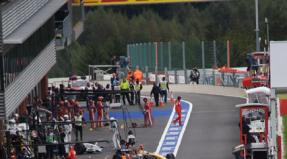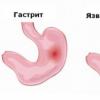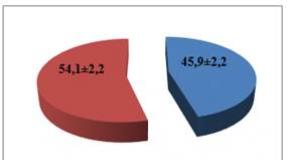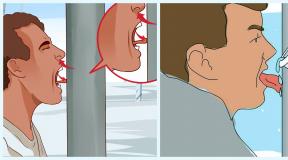Tidal and taming phenomena. Measuring water levels by a consequence of a low water level is
Flood - flooding of terrain as a result of the rise of the water level in rivers, lakes, seas due to rain, stormy melting of snow, wind nourium water on the coast and other reasons that causes damage to the health of people and even leads to their death, and also causes material damage. Depending on the causes of the occurrence, six main types of floods differ. Flood - periodically repeated relatively prolonged rise of water levels in rivers, called usually spring melting on plains or rainfall, as well as spring-summer melting snow in the mountains; Its consequence is the flooding of low areas of the terrain. Flood - Intensive periodic, relatively short-term rise of the water level in the river caused by abundant rains, shoes, sometimes quick melting of snow at winter thaws. Congestion - Loilding of the iceline during the spring ice drum in the narrowings and emitters of the river bed, constraining the course and causing the rise of the water level at the site of the accumulation of ice and some areas above it. Burden - The accumulation of loose ice material during the ice station (at the beginning of winter) in the narrowings and emitters of the river bed, causing the rise of water levels in some areas above it. Wind turbine - The rise of the water level caused by the impact of wind on a water surface, usually in the marine mouths of large rivers, as well as on the covered coast of large lakes, reservoirs and seas.
Basic flood parameters. Flood is characterized by the main parameters of the water regime of the river - the level and consumption of water, as well as the volume of flood. The water level is counted from the zero of the post or from the ordinar. Zero is the height of the plane of water in the river (lake, reservoir) above the conventional horizontal surface of the comparison. When organizing a post, this plane is chosen in such a way that it is 0.3-0.5 AT below the lowest level. Ordinar - average for many years of observation position of water level in rivers, bays and individual points of the sea coast.
23. The risk of flooding, methods of protection and rules
Danger degree: The main affixing factor is the flow of water characterized by high levels, and during dams of dams and floods - also significant flow rates. Additional affecting factors at the editors are the bulk of large ice masses and their pressure on the coastal structures, as well as the low temperature of the water.
According to repeatability, sizes (scale) and applied total damage to floods are divided into four groups - low, high, outstanding and catastrophic. Low (1 sighted 5-10 years) floods are observed mainly on the plains, in their occurrence, agricultural landfills are flooded, located in the floodplains. High (once in 20-25 years) floods are accompanied by a significant flooding of territories and cover large land plots of river valleys and lowland. Outstanding (once every 50-100 years) floods cover whole river basins, paralyzes economic activities and violate household population in large areas, they cause large material damage. With catastrophic floods, significant areas are flooded within one or more river systems. In the flooding zone, the economic and production activities of the population are fully paralyzed. Such floods lead to the death of people and tremendous material losses. They occur once every 100-200 years.
Ways to protect: The prerequisite for the organization of protection against affecting factors and the consequences of floods is their forecasting. For prediction, a hydrological forecast is used - a scientific and sound prediction of the development, nature and waters. The forecast indicates approximately the time of the occurrence of any element of the expected mode, for example, the opening or freezing of the river, the expected half of the flood, the possible duration of the standing of high water levels, the probability of ice plug and other. Forecasts are divided into short-term - up to 10-12 days and long-term - up to 2-3 months or more. They can be local (for individual sections of rivers and water bodies) or territorial, containing information that are summarized in significant territory on the expected sizes and periods of the phenomenon. Years of experience has shown that the material damage from flooding is significantly reduced in the presence of a forecast, a well-established service of information and alerts, high organized and trained in the population. Unfortunately, today, not all people living in the zone of potential flooding, appropriately belong to forecasts. Important flood protection measures are: reducing the maximum water consumption by redistributing the flow in time; water flow control with reservoirs; Hiding the river bed: the construction of the dams of dams (shafts); Conducting bererectic and dredging works, low seats; Land dispaccable across the slopes and landing of forest-protection strips in river basins; Terration of slopes, preservation of wood and shrub vegetation. Operational preventive measures include: alert of the population about the threat of flooding; advance evacuation of the population, farm animals, material and cultural values \u200b\u200bfrom potentially sleeved zones; Partial restriction or termination of the functioning of enterprises, organizations, institutions located in the areas of possible sleeve, protecting material values.
The main reason for the low level of consciousness is undoubtedly the insufficient development "I". Its development prevents a variety of factors that we will look at further. Recall how we defined "I":
"I" is a totality of everything that a person learned as a result of conscious deep reflection.
"I" man, unlike "We", is all that belongs to the essence of man.
We will call a person with a developed and mature "I" individual, and a person who has only "we", - antipyvid.
Follow the correspondence.
Conscious Deep Training - "I" Individual - a high level of consciousness.
Unconscious training - "we" antiindyvid - a low level of consciousness.
Antiindivide is a natural consequence of human hypnotic subordination to the group behavior models. As a result of a hedonistic attitude to life, a person avoids thinking about what goes beyond his usual ideas. It is much easier to obey the will of the crowd and take her tastes, habits and customs than to create their own value system. Antiindiwide is badly obeying the dictate of the majority and loses psychological autonomy. Thus, it turns into a giant car screw. Antiindiwide is lazy to think, does not like to think deeply or analyze. His thoughts are messy. He is not able to form his own ideas about life, about human relationships and God. He did not think that he swallows the dogmas of various religions, philosophical teachings or political movements. He blindly accepts what science claims. For example, if science considers telepathy to be deceived, he really believes it. Anyone with a university diploma is an undisputed authority for him. He is concerned about what people will say, and in their behavior focuses on the opinion of others. It is not able to distinguish intellectual knowledge from faith. He stubbornly defends his point of view only because "sure it is so."
Antiindivide is both the cause and consequence of a low level of consciousness. Speaking about the mechanism of consciousness, it is difficult to pro-lead a clear line between the cause and consequence, as they influence each other.
For example, the next two statements are equally correct: "Antiindivide is the result of a low level of consciousness," "Low level of consciousness is the result of what a person is antiindivide."
The question arises: what is primary? Is the low level of consciousness by the result of the fact that a person is antiindivide? Or does it become antiindivide due to the low level of consciousness?
In fact, the primary level is a low level of consciousness. Previously, we said that a conscious deep study creates a mature "I". However, as a person can consciously and reasonably acquire knowledge if he does not have a mature "I"? Certain personal qualities in childhood in aggregate with positive circumstances contribute to the awakening of consciousness and increase its level. However, these factors are outside the generally accepted social and cultural norms. For example, a closed child who communicates little with his peers is inclined to more observation and reflection and can more deeply argue about everything that penetrates his consciousness. Similar intensive use of higher intellectual abilities at an early age contributes to the formation of "I". It develops rapidly if the child persistently continues to analyze the world around. The most important elements of the formation of a high level of consciousness are laid in childhood and adolescence when there are many changes and impressions in life. At the same time, it is important that the child has certain traits and parents could be able to encourage his initiative and satisfy curiosity.
The use of special methods when teaching children in schools would allow them to teach them to achieve a high level of consciousness. But this means that the leaders of the education system must first understand what wakefulness is, and to achieve this condition.
The education system is arranged in such a way as to give children knowledge, but she does not teach to understand these knowledge. Children are forced to study complex items, not taking advantage of thinking first.
To explain the mechanism of acquiring knowledge, clarify at first some concepts whose value is too wide. We will give a more accurate and complete explanation of some words and will distinguish them from the generally accepted values, with which it is impossible to describe the highest thinking mechanisms.
Even on the topic of chapter 5 causes and consequences of a low level of consciousness:
- Consciousness spreads itself from the highest levels of divinity to the lowest level of the first measurement of stone and minerals. All God in different expression.
In the process of observing the level of groundwater, hydrologists recorded the seasonality of its change. In the spring, during a flood and, after a protracted shower, the level of groundwater is growing, with a long lack of precipitation and in the hot season of the year there is a decrease in the level of groundwater.
The amount of atmospheric precipitation affects groundwater level
The consequence of the changes in the level of groundwater becomes the fillerness of the upper aquifers feeding on the infiltration through the soil of atmospheric moisture and melt water. The precipitation season contributes to an increase in the power of aquifers, and in wells drilled on such aquifers, the water level rises, in drought - falls.
A long lack of precipitation leads to a decrease in the level in surface reservoirs: the depth of large reservoirs and lakes decreases, small reservoirs and rivers are minor, shallow wells and wells dry. At the same time, the volume of groundwater, which occur in pressure aquifers is not subject to significant fluctuations. The aquifers are depleted in the process of producing water from wells and wells.
Causes of changes in the level of water in the well and its complete drying
If it was performed on a non-valve aquifer, the water level in it will influence various external factors:
- Seasonal oscillations. During drought, the water level in the well can fall below the water intake point of the submersible pump. The resumption of precipitation will lead to the filling of the aquifer and the rise in the water level in the well.
- Increase water consumption. If the pumping rate of water from the well is higher than the rate of water flow into it, the water level can significantly decrease. This happens if the power of the pumping equipment does not correspond to the productivity of the well.
- Increase the number of consumers. Several wells drilled on one low-power robust horizon will not have a high water flow. The flow rate of each well is proportional to the number of wells.
So, on the water level in the well, its depth is influenced, the type of aquifer, the number of consumers and water consumption, the volume of infiltration of infiltration water into aquifer.
The main reason for the low level of consciousness is undoubtedly the insufficient development "I". Its development prevents a variety of factors that we will look at further. Recall how we defined "I":
"I" is a totality of everything that a person learned as a result of conscious deep reflection. "I" man, unlike "We", is all that belongs to the essence of man.
We will call a person with a developed and mature "I" individual, and a person who has only "we", - antipyvid.
Follow the correspondence.
Conscious Deep Training - "I" Individual - a high level of consciousness.
Unconscious training - "we" antiindyvid - a low level of consciousness.
Antiindivide is a natural consequence of human hypnotic subordination to the group behavior models. As a result of a hedonistic attitude to life, a person avoids thinking about what goes beyond his usual ideas. It is much easier to obey the will of the crowd and take her tastes, habits and customs than to create their own value system. Antiindiwide is badly obeying the dictate of the majority and loses psychological autonomy. Thus, it turns into a giant car screw. Antiindiwide is lazy to think, does not like to think deeply or analyze. His thoughts are messy. He is not able to form his own ideas about life, about human relationships and God. He did not think that he swallows the dogmas of various religions, philosophical teachings or political movements. He blindly accepts what science claims. For example, if science considers telepathy to be deceived, he really believes it. Anyone with a university diploma is an undisputed authority for him. He is concerned about what people will say, and in their behavior focuses on the opinion of others. It is not able to distinguish intellectual knowledge from faith. He stubbornly defends his point of view only because "sure it is so."
Antiindivide is both the cause and consequence of a low level of consciousness. Speaking about the mechanism of consciousness, it is difficult to carry out a clear line between the cause and consequence because they influence each other.
For example, the next two statements are equally correct: "Antiindivide is the result of a low level of consciousness," "Low level of consciousness is the result of what a person is antiindivide."
The question arises: what is primary? Is the low level of consciousness by the result of the fact that a person is antiindivide? Or does it become antiindivide due to the low level of consciousness?
In fact, the primary level is the low level of consciousness. Previously, we said that a conscious deep study creates a mature "I". However, as a person can consciously and reasonably acquire knowledge if he does not have a mature "I"? Certain personal qualities in childhood in aggregate with positive circumstances contribute to the awakening of consciousness and increase its level. However, these factors are outside the generally accepted social and cultural norms. For example, a closed child who communicates little with his peers is inclined to more observation and reflection and can more deeply argue about everything that penetrates his consciousness. Similar intensive use of higher intellectual abilities at an early age contributes to the formation of "I". It develops rapidly if the child persistently continues to analyze the world around. The most important elements of the formation of a high level of consciousness are laid in childhood and adolescence when there are many changes and impressions in life. At the same time, it is important that the child has certain traits and parents could be able to encourage his initiative and satisfy curiosity.
The use of special methods when teaching children in schools would allow them to teach them to achieve a high level of consciousness. But this means that the leaders of the education system must first understand what wakefulness is, and to achieve this condition.
The education system is arranged in such a way as to give children knowledge, but she does not teach to understand these knowledge. Children are forced to study complex items, not taking advantage of thinking first.
To explain the mechanism of acquiring knowledge, clarify at first some concepts whose value is too wide. We will give a more accurate and complete explanation of some words and will distinguish them from the generally accepted values, with which it is impossible to describe the highest thinking mechanisms.
Know and understand - not the same thing. A person can know without understanding, but can not understand without knowing. Understanding is the final result of knowledge that allows a person to come to solid and deep conclusions that become an integral part of his mind. Understanding is a perfect form of knowledge. Know - means to have a surface idea of \u200b\u200bsomething, stored in memory information. A person who knows can only operate with ready-made concepts, and the one who understands may have his own judgments. Antiindivid knows, and the individual understands.
It is known that any process of deep understanding allows you to learn certain elements of the knowledgeable that are never forgotten. For example, the correct understanding of the theory of relativity forms a clear representation in a person's mind, which will forever remain at the disposal of its intelligence. Knowledge is limited because it does not give ideas about the whole. Understanding allows you to compare and associate various things that helps deepen, expand and improve the concept.
Think and reflect - not the same thing. Reflection is a process of a deep understanding carried out in a state of top awake. All people think, but only a few reflect on. Thinking of ordinary people is disorderly, unclear, involuntary mental activity, in the process of which a person falls under the power of his own imagination. We can say that he does not think, but forced to think. They lead prejudices, prejudices, emotions, instincts and passions. Reflection is the highest type of mental activity, in which a person intentionally and deliberately uses his mental abilities.
Clear thinking inherent in very few people is a consequence of reflection. It is impossible to think with clarity. We know that the usual mental state of the person is confusing, it is unclear and foggy even when it solves very complex tasks.
Thus, the concept of "thinking" corresponds to "to know", the concept of "reflement" is "understanding".
Logic gives us the necessary items for efficient use of thinking. Unfortunately, it does not allow to correct errors caused by incorrect ideas. Conventional thinking is based on unclear and erroneous concepts. In fact, we clearly think only in exceptional cases.
Inability to control intellectual abilities is one of the main reasons for the low level of consciousness.
Another reason is the phenomenon of "identification." The identification is the absorption of a person's consciousness of any idea, an event, an internal state, a visual manner, sound or performing certain physical movements.
The identification behaves directly to sleep. Wake up - means to be able to get rid of identification with an idea, an event, an internal condition, a visual manner, sound or performing certain physical movements.
Representation of a person's consciousness as a certain force that can be separated from it. It can be symbolically repressed as a rubber bowl glued to the forehead. If this ball is, then a person is conscious, in other words, its consciousness level is more or less high.
For example, a person calmly sits at home in a chair and is not particularly busy. Suddenly, a window is broken from the stone blow. The rubber ball (consciousness) instantly departs to what is happening and returns with sensory information, which cannot be correctly perceived by the person because it is unconscious, that is, its ability to assess the situation is temporarily absent. He woars greatly because the consciousness did not have time to return to him before he received this sensory information. This is a typical example of identifying or projection "I". Thus, this man "united" with a suddenly broken glass and "became part of" what is happening, so his feelings were particularly intense. The identification turns a person from the viewer into the actor, which is why it easily loses calm.
In everyday life, we often meet with problems and events that do not have a direct relationship to us, but nevertheless have a deep emotional impact on us. The more we are identified with any problem, the more we turn out to be excited.
We give the usual example. We see a man on the street that fell unconscious. It affects us no more. But if this person proves to our relative, then we will certainly be very upset. Thanks to the deep emotional connection, our identification will be much stronger.
The less we identify ourselves with any situation, the clearer we argue. For example, it is easy to advise something else, how to resolve its problem. While he himself can not clearly see because of his identification with her, the decision seems obvious from the side. But if it were our problem, perhaps we could not find the right decision.
Understanding identification is the key to achieving the state of calm. Next, we will look at some methods that allow it to achieve.
The vicious circle forming and supporting the low level of consciousness is that this level is characterized by certain mental states, which, in turn, do not give a person to awaken.
Internal conflicts do not allow a person to see the reality that holds his consciousness at a low level. Complexes, disappointment, suppression of emotions and neurosis - deadly enemies of consciousness.
Habits are also a serious obstacle to achieving a high level of awake, as they reduce conscious attention, which should be inherent in our actions.
In essence, the inability to awaken is a violation of the functions of the mind. Strictly speaking, absolutely normal people do not exist, since everyone is somehow being affected by unconscious impulses.
Any nervous disorder is a deviation of a mental function that violates the normal activity of the brain.
A person is quite enough of his ability to reasoning to control his negative emotions and the state of excessive nervous tension. Nevertheless, in life, we see that very smart people have no greater self-control than people with a low level of intelligence.
The low level of consciousness (semifice) is often the continuation of the morning stage of development, when the fruit slept, it was convenient and safe. Birth injury associated with a sharp separation of the fetus from the mother is often preserved in adulthood. This is expressed in the fact that most of the person delayed at the childhood level. Such a person never matures and is constantly looking for a replacement of the mother's image.
Personalities are simple, with scant experience, as a rule, are more balanced and stable.
A person with a low level of consciousness is subject to excessive nervous tension, poorly controls itself, quickly gets tired, it is difficult for him to focus, he has low performance.
In the next chapter dedicated to consciousness and subconscious, we will ineure and expand some concepts that still fully reveal the reasons for the low level of consciousness.
An object of construction survey: a system of sewage system of a residential building and a central sewage system.
Address of Examination: Belgorod
The purpose of the survey: to answer the questions set in the court definition of the case:
What are the causes of flooding of the basement of a residential building:
- sewage network (central sewage)
- impaired SNIP in the design and construction of the sewerage of a residential building;
- other reasons?
Characteristics of the object: The jbget is a residential building of a cottage type with an organized courtyard sewage network. The lower mark of the ground floor injected during flooding, -3150 mm from the ground level. The sewage network has a bias of 0.008 and consists of three sections, the beginning and the end of which is limited to viewing wells: from K-16 to 1 with a length of 10 m, from K-17 to 1 to 18 with a length of 36.5 m and from K-18 to 18 Inserts to the central reservoir of the well to the B \\ H outdoor network, a length of 35.0 m. The diameter of the sewer pipes of the courtyard of 150 mm. Wells of the courtyard, on the site of the house, 1800 mm high are made of concrete rings, design and execution comply with regulatory documents.
Diagnostic examination
During the examination, the premises of the home theater were surveyed, as well as all three viewing well of the courtyard network and four street wells.
Evaluation of the construction expert
Depending on the number of defects and the degree of damage, the technical condition of the building structures is estimated at the following categories (see CH. 3 "Terms and Definitions" of SP 13-102-2003).
Expert assessment of the technical condition of the design is a limited operational.
Displacement of structural elements, i.e. The slab overlap with the neck is shifted to the working chamber, distorts GOST 8020-90 Concrete and reinforced concrete designs for the wells of sewer, plumbing and gas pipelines:
The central collector has limited bandwidth due to the presence of objects that can lead to a blockage, hatching of pipes, which is a consequence of a low level of maintenance of the sewer network.
According to the Decree of the Government of the Russian Federation of February 12, 1999, N 167 "On approval of rules for the use of municipal water supply and sewage systems in the Russian Federation" (as amended on May 23, 2006):
The organization of the water supply and sewage economy is required:
- ensure proper operation and functioning of water supply and sewage systems in accordance with the requirements of regulatory and technical documentation and the contract concluded between the owner of these systems and the organization of the water supply and sewage economy;
- to issue a subscriber (customer) Technical conditions for accession to water supply and sewage systems;
- to conclude with the subscriber (customer) an agreement on vacation (obtaining) drinking water and reception (discharge) of wastewater, taking into account the possibility of water supply and sewerage systems;
- ensure the fulfillment of the terms of the contract with the Subscriber and the requirements of these Rules;
- participate in the acceptance of devices and structures for accession to water supply and sewage systems and accounting nodes;
- take measures to reduce leaks, losses and irrational use of drinking water;
- carry out production laboratory control of the quality of drinking water and discharged into water bodies of wastewater;
- take measures to prevent unauthorized accession to water supply and sewage systems and unauthorized use;
- prevent subscribers, local governments and the relevant state supervision authorities on termination (restriction) of drinking water leave and reception (discharge) of wastewater in the manner and cases provided for by these Rules;
- take the necessary measures on the timely elimination of accidents and damage on water supply systems (sewage) in the manner and deadlines established by the regulatory and technical documentation, and the resumption of systems in compliance with sanitary rules and norms; ......
The subscriber has the right:
- ........ Refund of damages incurred due to the organization of the water supply and sewage economy;
The organization of water supply and sewer and subscriber is responsible:
- for non-fulfillment of contractual obligations in accordance with the legislation of the Russian Federation and these Rules;
- for harm caused to leaks of drinking water (wastewater) from water supply systems (sewage), which are owned, economic management or lease.
The organization of the water supply and sewer is responsible:
- for damage caused to the Subscriber;
- for the quality of the supplied drinking water and compliance with its sanitary standards and rules.
The subscriber is responsible:
- for the harm caused to the organization of water supply and sewage economy or systems of municipal water supply and sewage, in accordance with the legislation of the Russian Federation;
- for the quality of wastewater discharged into a centralized system of municipal sewage system, which must comply with the established standards;
- for the accuracy of information on the accounting of obtained drinking water and discarded wastewater and pollutants.
Persons guilty of unauthorized accession to systems of municipal water supply and sewage and damage to these systems, which may entail a threat to life and health of the population, are responsible in accordance with the legislation of the Russian Federation.
Conclusions of the construction expert:
- The surveyed system of intraophone sewage at the site of the house is in a working condition, the passage of sewage drains to the prefabricated central collector of the village is provided with a very large margin.
- Detected on the walls of the wells of intraophore sewage traces from a short-term rise of water in the well can only be from flooding as a result of lifting in wells of the national central collector, the village where the intra-door sewage system is connected.
- The depth of the flooring of the basement of the house is according to the project 3.2 m, while the level of the bottom of the wellness of the intraophone sewage is 1.8 m.
- Taking into account this, with even a minor increase in the water level in the well of intraophone sewage, the return current of water occurs, which leads to the flooding of the basement of the house. To combat this phenomenon, the installation of the check valve is applied, which is not provided in the project.
- When examining the wells of the central collector, the Violations of GOST in terms of the execution of wells and the SNiP on the quality of their installation are recorded.
- When examining the wells of the central collector, the presence of foreign objects and the sub-position, causing the rise of water level in the wells, which can cause flooding of the basement of the village houses.
To avoid the emergence of repeated floods of consumers, experts are recommended:
- all consumers install automatic shut-off valves that are triggered by increasing the level of fluid and overlapping wastewater access from the street network.
- FSUE "Rublevo-Uspensky Lok", which is responsible for the maintenance of the street system of sewage in good condition, to organize work according to the Decree of the Government of the Russian Federation of February 12, 1999 N 167 "On approval of rules for the use of utility water supply and sewage systems in the Russian Federation" and other regulatory documents To strictly comply with the system of planning and preventive repair of networks.
Conclusion of a construction expert
When conducting a diagnostic survey, the experts did not provide project documentation of the entire sewage network, as a result of which there is no information on the presence and classification of industrial and administrative buildings connected to this network. Calculates on checking compliance with the bandwidth standards of an existing collector with a diameter of 200 mm from all consumers in this case is not possible, as a result of which the analysis of the design solutions in this part was not produced. However, taking into account the availability of the basement of the house at the mark below the level of the well, it was necessary to provide the setting of the check valve, which was not detected in the design solutions. Wells (central sewage) are made with violations of existing SNiP and GOST. The wastewater consumption of the attached courtyard of the house, to the street, laid through the existing project, is extremely insignificant (0, 41 l / s). In view of which to overflow the collector and the rise in the level of wastewater, which created the porch of the fluid and the resulting flooding of the network wells, could not bring it. The technical condition of the courtyard system is estimated as goodplace. The technical condition of the system sewage system is estimated as limited to workable. The reason for the flooding of the basement of the residential building could only be the base of the central manifold on the site below the insertion of the courtyard in it in the course of the flow of wastewater (in the project documentation submitted by the project documentation, the plots and wells of the street network are not numbered), including the protection of the protection . It should be noted that this has also become possible due to the absence that is not provided for by the project of the check valve at the site of connecting the internal sewage system at home to intra-door sewage. SNiP 2.04.01-85 * Internal water supply and sewage system.



















